
Second Wave of Pacific Cup Boats Casts Off for Hawaii
Twenty-six boats will start in two Pacific Cup classes today, with Svendsen’s Bay Marine PHRF 3 starting at 11:30 and the NAOS Yachts PHRF 4 starting at 11:40. The wind gods have not looked favorably on Monday’s starters, as most spent Monday night in 0-7 knots of wind while being entertained by many breaching whales and other wildlife. By Tuesday evening, the breeze was picking up, with most boats heading south of the rhumb line in search of breeze. Don Jesberg’s Cal 40 was the farthest south, while Elliott James’ Bloom County was the only boat north of the rhumb line yesterday evening. But he’s now diving south with the rest.
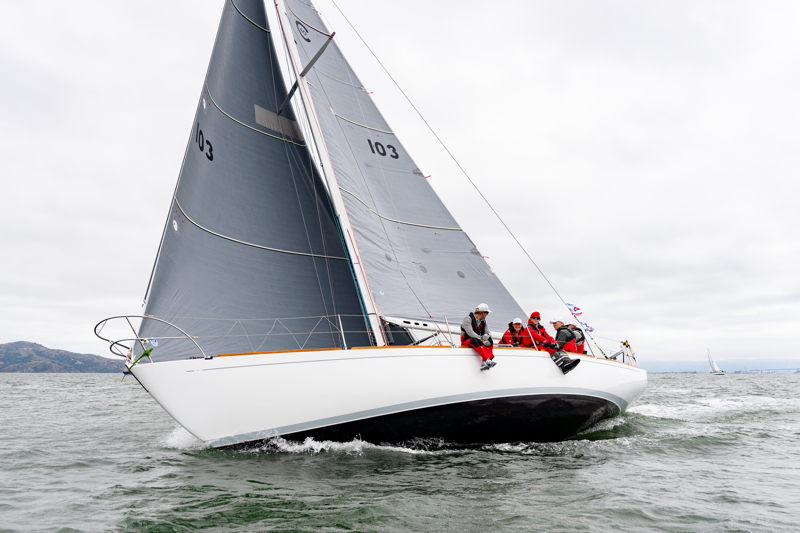
The weather for Wednesday’s starters looks much more favorable, and by Thursday, when the bigger, faster boats hit the line at 12:30 p.m., the breezes offshore will be solid. This gives the faster boats a huge boost over the slower and smaller boats that started on Monday and spent their first 24 hours sitting to leeward and not getting much farther than the Farallones and Half Moon Bay. This morning they’re finally rolling along.

On the Swan 65 Translated 9 US, skipper Paul Cayard and son Danny are part of an 11-person crew who are sailing the sistership of the Swan 65 Translated 9 that recently completed the Ocean Globe Challenge round-the-world race. The local Swan has been based in Sausalito, training sailors for the OGR, and now has a crew comprising OGR and Pac Cup vets. Translated is a global language translation and AI language company.
The Cal 40 is represented by four well-prepared, well-sailed boats in Weems & Plath PHRF 1 including Rodney Pimentel’s Azure, Jim Quanci’s Green Buffalo, Bob Horton’s Highlander and Don Jesberg’s Viva. This will be a fun group to watch. The farthest-south boat of all Monday’s starters, Don Jesberg’s Viva, is currently leading the Cal 40 fleet.
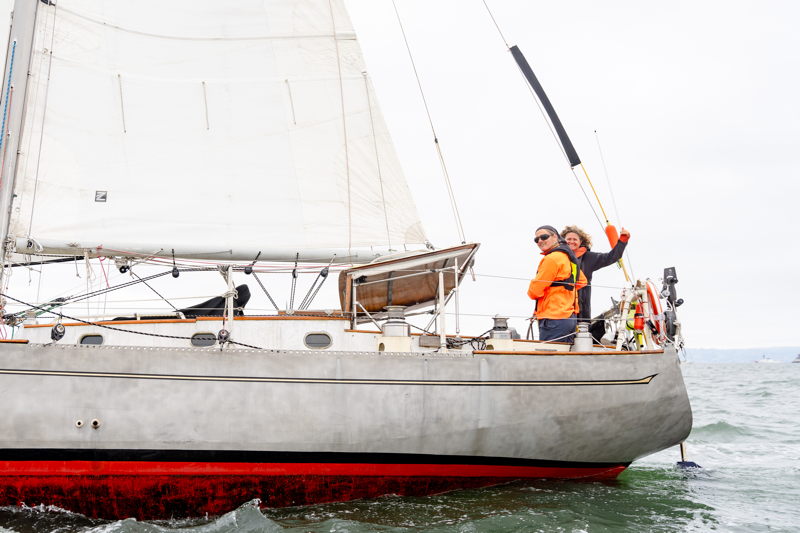
We profiled Heather Richard in January after learning she’d decided to give a doublehanded Pacific Cup race to her son Julius as a high school graduation present.
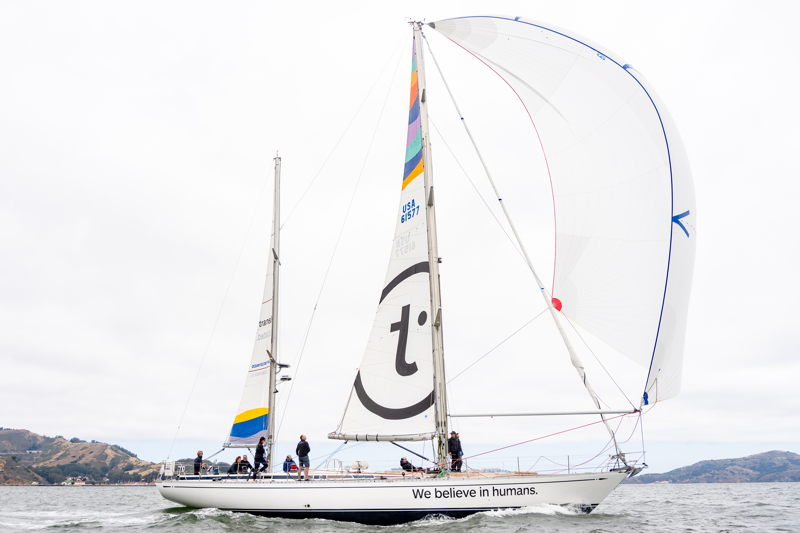
Below is the view of the scene from Windy for the Monday, Wednesday, and Thursday starters. As with a lot of sailing, there’s often a roll of the dice, and for this year’s race it’s going to be hard for the Monday starters to overcome the 24-hour pause button they were handed for their first day of racing.
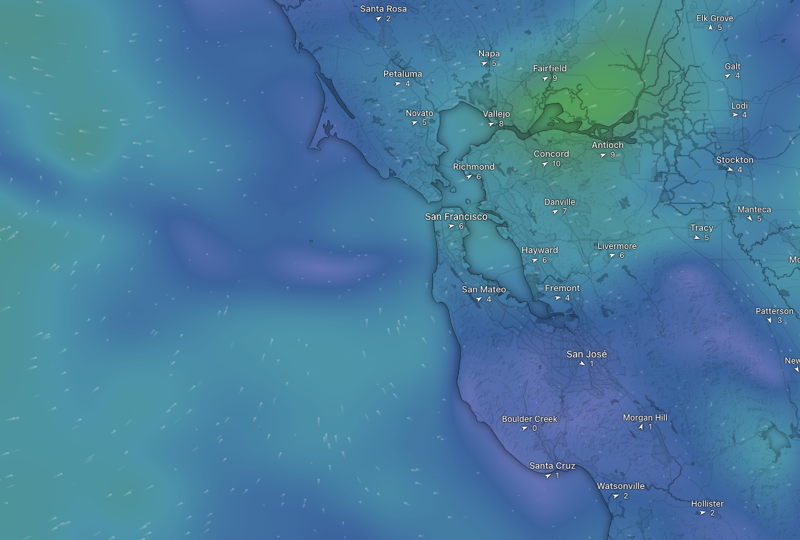

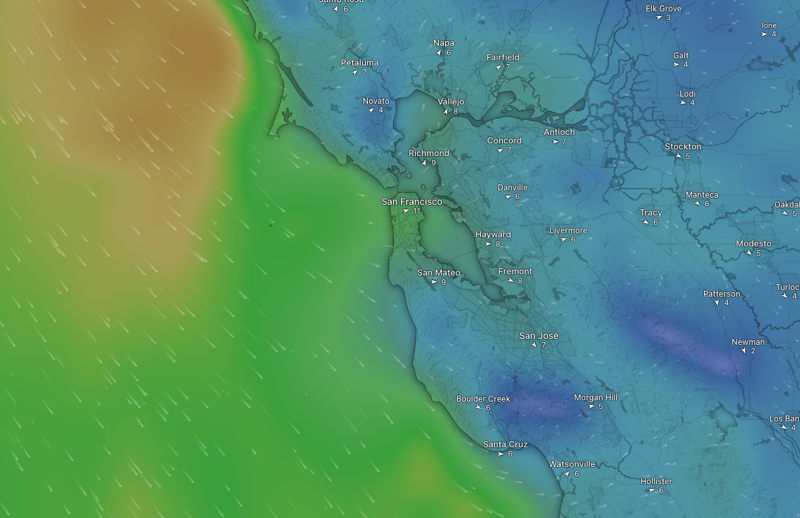
Today’s starters will be heading under the Gate about noon toward fresher breeze to help them on their way to Hawaii. By next Sunday they’ll all have a full moon and will hopefully be in warmer air and steadier breezes. You can follow them on the tracker here.

The red line on the north side of the tracker is the Great Circle (GC), not the rhumb line. The GC is the shortest distance between SF Bay and Kaneohe finish. However, the GC is usually not a practical choice to sail as it crosses the average July position of the Pacific High and its lighter winds. Using the GC to measure the remaining distance to the finish is often misleading, as it will show the more northern boats leading the boats in the south, when in fact the traditional course is the “Reverse S” i.e. initially dive south to get under the Pacific High. ~skip allan
Skip – that’s the second time in short order that you’ve had to correct us on the difference between the rhumb line and the Great Circle route. We actually do know the difference as the rhumb line (loxodrome) is a straight line between two points and the Great Circle route being the shortest distance between two points. But we did confuse the red line on the Pacific Cup’s tracker calling it the rhumb line and rather than the Great Circle route. We appreciate you again straightening us out!
I believe it’s also true that most Transpac and Pacific Cup winners sail south of the Rhumb line (and also the Great Circle route) to avoid the Pacific High though, in some years, the rhumb line has been a winner. So far the consensus is sail south. Since weather information and routing software is far more sophisticated these days the boats tend to stay closer together but there’s still enough variety to give those that find the right lane an edge.
Hope this isn’t misleading people further!
John, the difference between the rhumb line and the great circle isn’t as paradoxical as you make it sound. A straight line is *always* the shortest distance between two points. But a rhumb line is straight *only* on a Mercator projection, which as we all know is a distorted view of the Earth’s suface. The great circle *is* a straight line (apart from following the Earth’s curvature), as you can see if you stretch a string between two points on a globe then sight along it. That’s why it’s the shortest path.